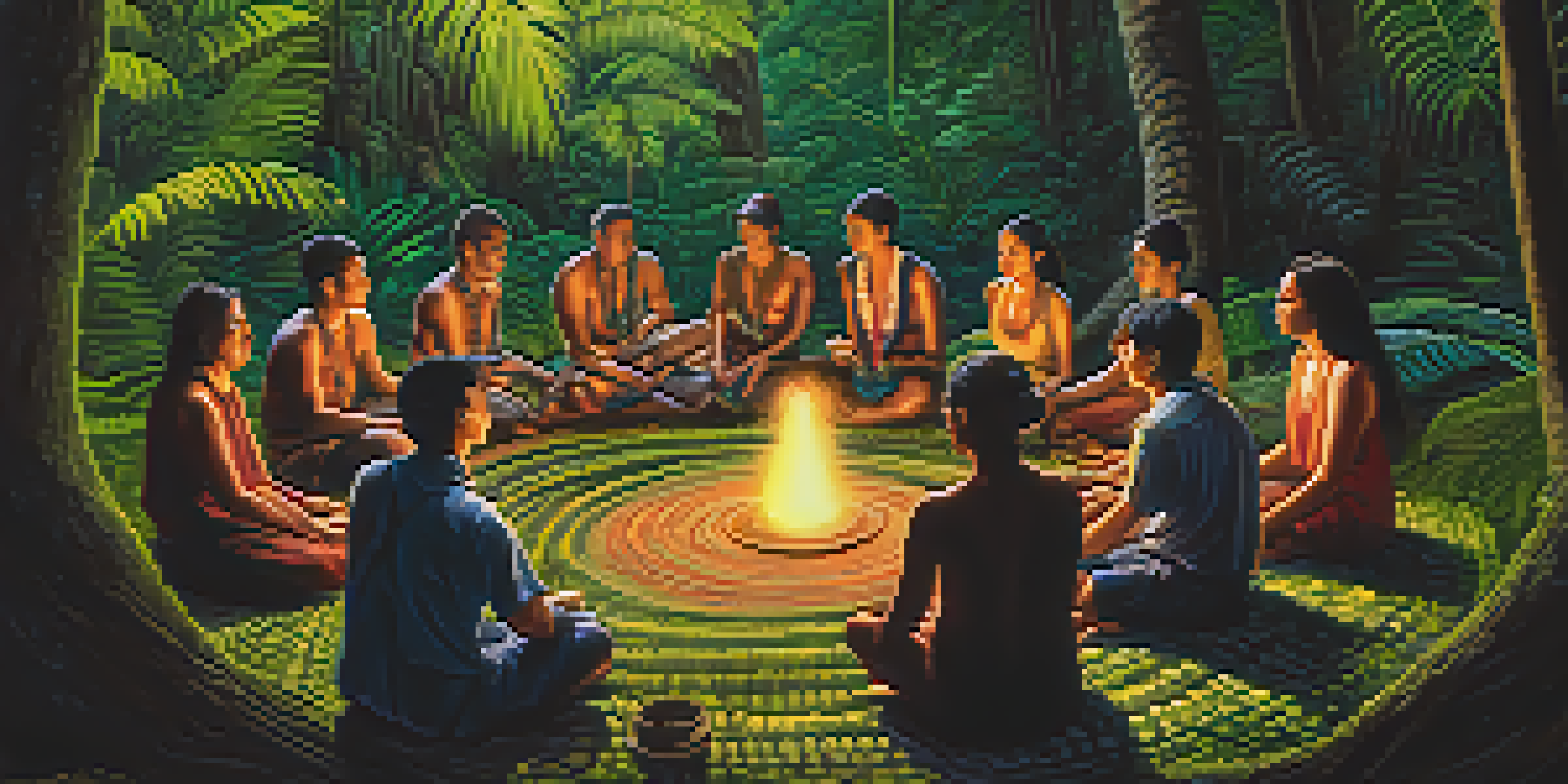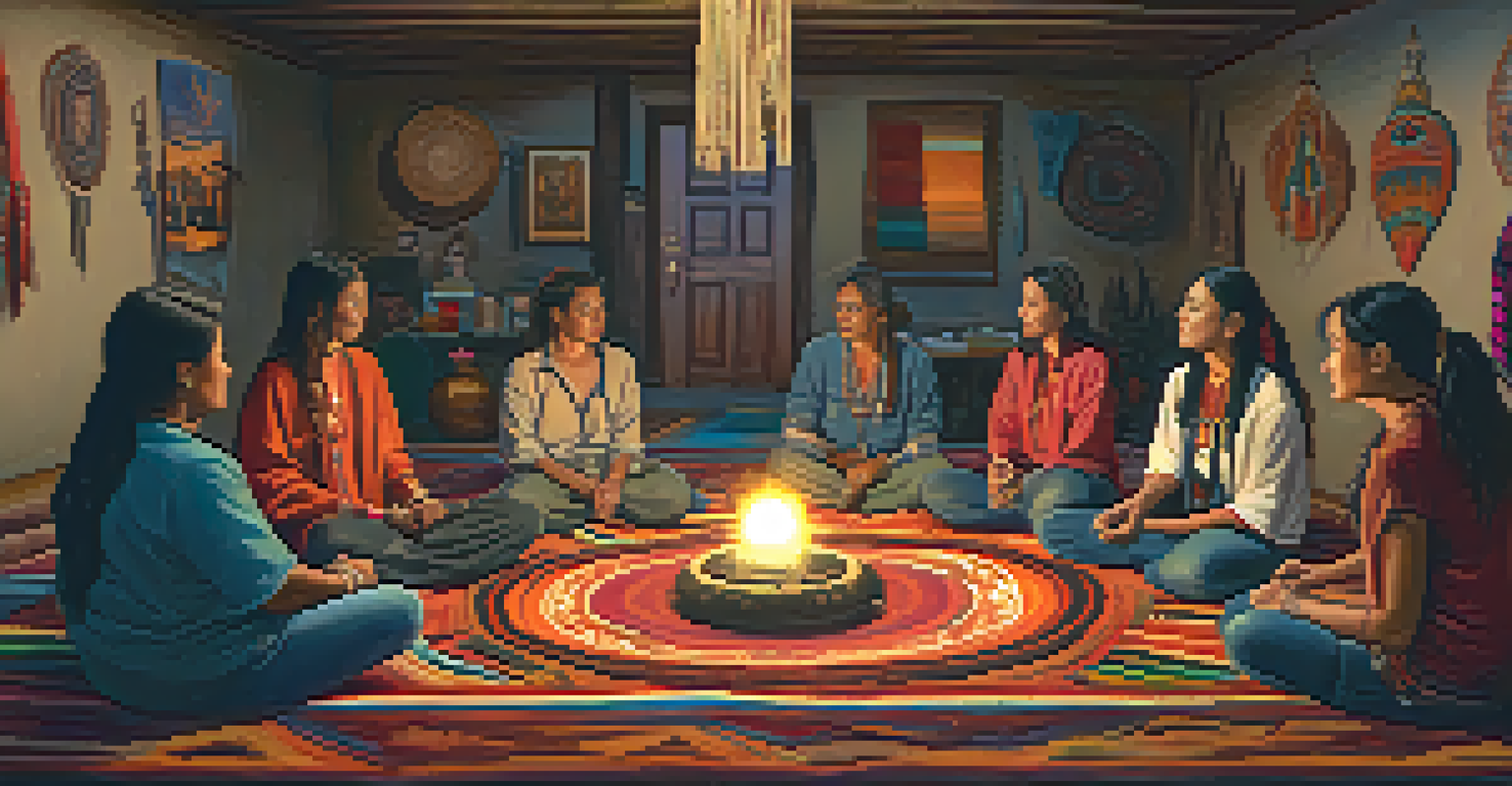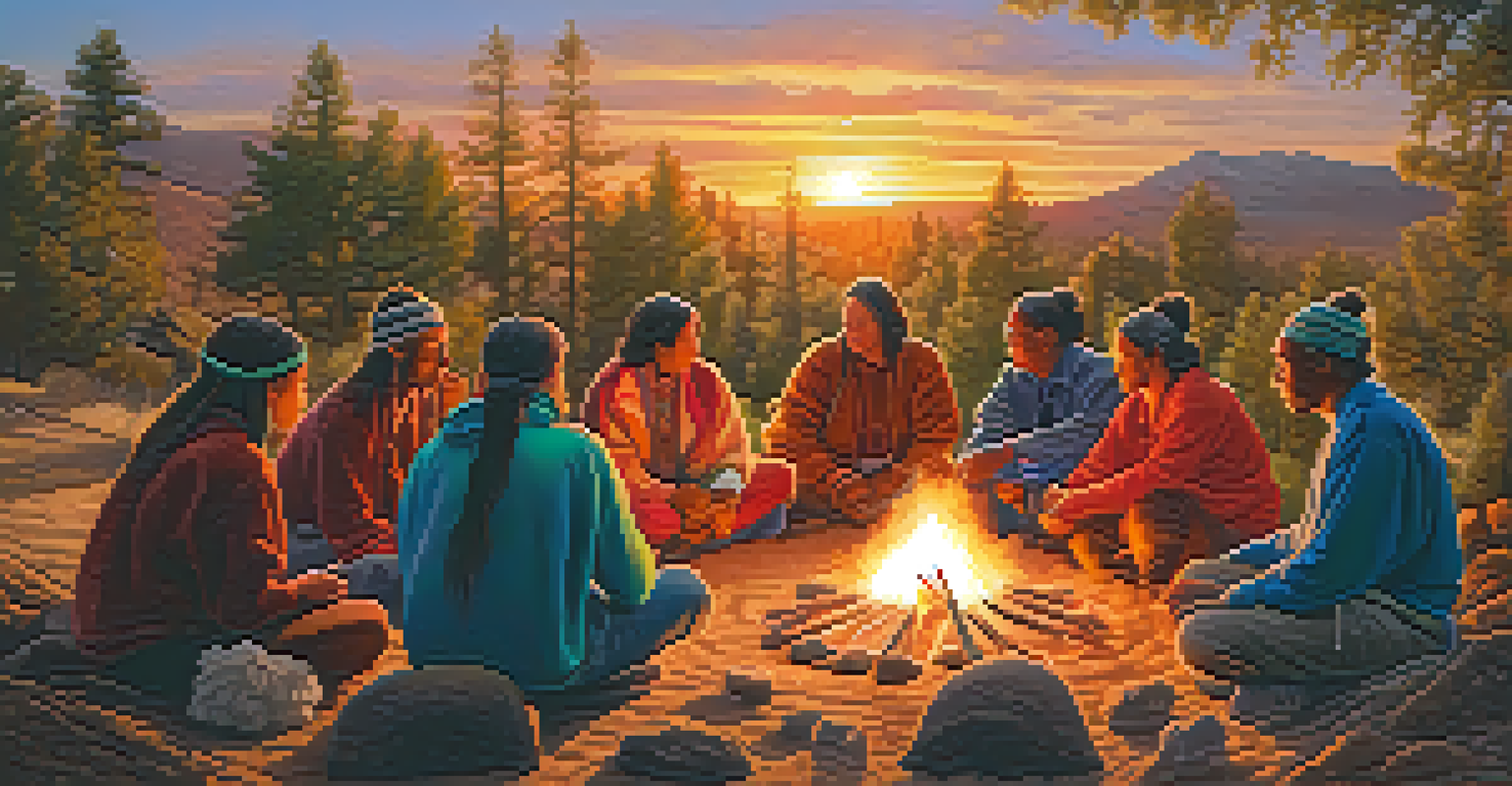Entheogens and Community: Rituals in Indigenous Cultures

Understanding Entheogens: A Brief Overview
Entheogens are natural substances that induce altered states of consciousness, often used in spiritual contexts. Derived from the Greek words 'entheos' meaning 'god within' and 'genesthai' meaning 'to generate', these substances have been pivotal in various indigenous cultures. They are not merely recreational; their use is deeply intertwined with rituals that foster community and shared experiences.
Entheogens are not merely substances; they are keys to understanding the deeper layers of our consciousness and connection to the universe.
In many indigenous societies, these substances are considered sacred and are used to connect with the divine, ancestors, or the universe at large. This connection fosters a sense of belonging and purpose among community members. By engaging in these rituals, participants often report profound insights and a strengthened bond with one another and their environment.
Examples include the use of peyote by the Native American Church, ayahuasca in the Amazon, and psilocybin mushrooms among various cultures. Each of these substances comes with its own set of rituals, intentions, and communal practices, emphasizing the importance of context in their use.
Rituals as a Foundation of Community Bonding
Rituals involving entheogens often serve as essential bonding experiences for participants. They create a shared journey where individuals can explore their inner selves while feeling supported by the group. This shared vulnerability can lead to deeper connections, fostering trust and understanding among community members.

For instance, in the traditional use of ayahuasca ceremonies, participants often engage in group singing, sharing, and storytelling, which enhances the communal experience. These practices not only help individuals navigate their personal journeys but also strengthen the collective identity of the group.
Entheogens Foster Community Bonds
Rituals involving entheogens create shared experiences that strengthen trust and understanding among participants.
The communal aspect of these rituals is crucial; they transform individual experiences into shared narratives that enrich the community. As members recount their experiences, they create a tapestry of stories that bind them together, reinforcing social ties and cultural heritage.
The Role of Elders in Indigenous Rituals
In many indigenous cultures, elders play a pivotal role in guiding entheogenic rituals. They are the keepers of tradition, ensuring that the ceremonies are conducted with respect and reverence. Their wisdom and experience are invaluable, as they help participants navigate the complexities of their experiences.
Rituals are the way we connect with our ancestors, our community, and the sacred aspects of life.
Elders often share the historical and cultural significance of the substances being used, providing context that deepens the participants' understanding. This guidance not only enhances the individual experience but also reinforces communal values and teachings.
Moreover, the presence of elders during these rituals fosters a sense of safety and security for participants. Knowing that they are in the hands of experienced guides allows individuals to explore deeper aspects of their consciousness with confidence, strengthening their connection to the community.
Healing and Transformation Through Shared Experiences
One of the most profound aspects of entheogenic rituals is their potential for healing and transformation. Participants often report significant emotional and psychological breakthroughs, which can be further amplified in a communal setting. Sharing these experiences with others creates a supportive environment for healing.
In many cases, the rituals serve as a catalyst for personal growth and collective healing. For instance, traditional sweat lodge ceremonies are often accompanied by the use of entheogenic plants, allowing participants to purge negative emotions and gain clarity. This process of healing is not just individual; it reverberates throughout the community.
Elders Guide Ritual Practices
In indigenous cultures, elders provide essential guidance during entheogenic rituals, ensuring respect and safety for participants.
As individuals heal and transform, the entire community benefits from the positive energy and insights shared during these rituals. This interconnectedness highlights the importance of community in the healing process, emphasizing that we are all in this journey together.
Cultural Preservation Through Ritual Practices
The rituals surrounding entheogens play a critical role in preserving indigenous cultures and traditions. These practices are often passed down through generations, ensuring that cultural knowledge and values remain alive. In a world increasingly influenced by globalization, these rituals serve as a vital link to ancestral heritage.
By participating in these communal rituals, younger generations are reminded of their roots and the importance of their cultural identity. This connection fosters pride in their heritage and a commitment to preserving their unique traditions.
Furthermore, as these practices gain recognition and respect beyond their indigenous origins, they can help raise awareness about the importance of cultural diversity. Emphasizing the role of entheogens in rituals can spark conversations about cultural appreciation versus appropriation, encouraging respect for indigenous wisdom.
Entheogens and Modern Community Building
In recent years, there has been a resurgence of interest in entheogens, not just within indigenous cultures but also in modern communities. People are exploring these substances as tools for personal and collective growth, often adapting traditional practices to contemporary settings. This blending of old and new can create vibrant communities centered around shared experiences.
Modern retreats and workshops often incorporate elements of traditional rituals, providing participants with a sense of connection to something greater than themselves. These gatherings promote dialogue, creativity, and emotional expression, echoing the communal aspects of indigenous practices.
Cultural Preservation Through Rituals
Entheogenic rituals are vital for preserving indigenous cultures, connecting younger generations to their heritage and values.
As more individuals seek alternative spiritual practices, the potential for building inclusive communities grows. This evolution highlights the adaptability of entheogenic rituals and their ability to foster connection across diverse groups, creating a tapestry of shared human experience.
Ethics and Respect in Entheogenic Practices
As interest in entheogens grows, so does the need for ethical consideration and respect for indigenous practices. It's crucial to approach these rituals with an understanding of their cultural significance and the historical contexts from which they arise. Misappropriation or commercialization can lead to harm and dilute the original meanings of these practices.
Engaging with indigenous communities and learning from their teachings is essential in honoring the roots of these rituals. This can involve supporting indigenous-led initiatives and advocating for their rights to practice their traditions without external interference or exploitation.

Ultimately, fostering a respectful and ethical approach to entheogens can lead to meaningful exchanges that benefit both indigenous cultures and modern communities. By prioritizing reciprocity, we can create a more harmonious relationship with these powerful substances and the traditions that surround them.